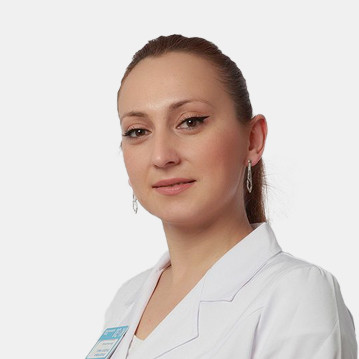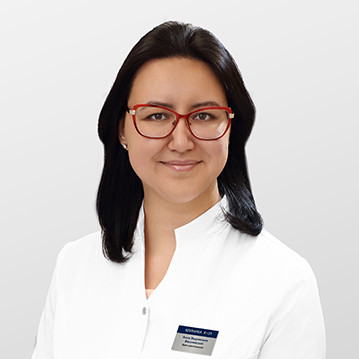A nephrologist, urologist, and endocrinologist are usually referred for MRI of the adrenal glands. But this study can also be useful in gynecology, general surgery, oncology, as it is very informative, it can help identify the causes of pathologies, gland formation, and clarify differential diagnosis.
The study is being carried out by the "K+31" diagnostic clinic in Moscow. Our advantages are comfortable diagnostic conditions, a wide range of diagnostic procedures, accurate and fast results.
Types of tomography of the adrenal glands
Examination of paired endocrine glands is performed on high-field and ultra-high-field closed circuit MRI machines. Electromagnetic waves are reflected from the cells of organs, and the reflection from the sick and healthy is different. This allows you to accurately visualize the picture of internal structures, determine not only the presence of pathologically altered tissues or tumors, but also their nature, stage, type, localization.
There are two main types of magnetic resonance imaging:
- Classic, no contrast. It is performed with a wide range of indications, in most cases it replaces several diagnostic methods. Well visualizes the anatomical structures of the cortex and medulla of the glandular organs, tissue inflammation, increase in size.
- MRI of the adrenal glands with contrast is performed in the same way, but a special substance is injected into the bloodstream, which serves as a means of contrast enhancement for a detailed study of blood vessels, relief, the nature of accumulation by the parenchyma and the rate of excretion. This method is always used in cases where there is a suspicion of an oncological neoplasm.
Which is better, MRI or CT for examining the adrenal glands?
For examination of the adrenal glands, MRI and CT are performed with and without contrast. In diagnostics, they are identical to each other, however, in the case of adrenal pathologies, like most others, MRI has advantages.
This diagnostic method does not give radiation exposure to the body, like computed tomography, is completely harmless for repeated use according to indications, and its accuracy is higher. Soft tissues, blood vessels, glandular structures, ducts are better visualized by magnetic tomography.
The choice is made by the doctor, assessing the patient's condition, objective indications and contraindications, anamnesis, and proposed diagnosis.
If the patient is allergic to the components of the contrast agent, the doctor selects alternative diagnostic methods based on the principle of the maximum possible information content for treatment and minimal risks.
Indications for MRI of the adrenal glands
Most often, the condition of these paired glands is examined together with the kidneys. Therefore, the study is called "MRI of the kidneys and adrenal glands."
The examination is performed when ultrasound, radiography, CT, laboratory diagnostics did not clarify the cause of the following clinical symptoms:
- Presence of blood in the urine.
- Pain in the lumbar region, abdomen.
- The presence of education under the ribs.
- Any urination disorder.
- High blood pressure that is not corrected by special drugs, palpitations, arrhythmias, headaches.
Signs that may indicate hormonal disorders due to gland damage, Itsenko-Cushing's syndrome:
- Increase in body weight with characteristic fat "depots" - on the abdomen, neck and cheeks, the presence of a "widow's hump".
- The appearance of stretch marks on the skin, multiple bruises, hemorrhages.
- Infertility, sexual dysfunction.
- Severe disorders of the psycho-emotional sphere.
- Severe swelling on the face, eyelids.
- Acne.
- Increased body hair in women or lack of secondary sexual characteristics in men.
- Signs of reduced immunity.
- Osteoporosis, frequent fractures, low bone density.
- Dyslipidemia, elevated blood glucose.
Symptoms indicating a lack of synthesis of steroids by the adrenal glands, Addison's disease:
- Unexplained weight loss.
- Chronic fatigue, weakness, apathy, asthenia.
- Digestive problems - nausea, loose stools, increased gas.
- Pain in muscles and joints, cramps.
- The appearance of hyperpigmented areas of the skin.
- Reducing blood sugar.
Many of these symptoms may indicate disorders in the brain, in particular, the pituitary gland. Therefore, before being sent for examination, the doctor analyzes the data of other diagnostics, laboratory tests. The specialist determines which method to choose, which is better CT or MRI of the adrenal glands will clarify the clinical case.
Contraindications for MR examination
Examination on an MRI scanner is safe, it can be done at any time interval as many times as needed in the treatment process.
However, there are contraindications thatmust be taken into account so as not to cause ill health or injury.
MRI is contraindicated in:
- The presence of ferromagnetic substances in the body. These can be tattoo paints, prostheses, including dental and bracket systems, knitting needles, plates, implants, chips, a bullet, a vascular clamp, etc.
- Pacemaker, insulin pump, any other electronic devices installed in the body.
- Epilepsy.
- Acute phase of the disease, high temperature, exacerbation of chronic diseases.
- Severe pathologies of the cardiovascular, urinary systems, brain.
- 1st trimester pregnancy
- Children aged 0-5 years.
- Claustrophobia, some mental disorders, instability of the psycho-emotional state.
- Severe form of renal failure.
MRI examination with contrast cannot be performed if:
- Pregnancies in any trimester, unless the risk of pathology outweighs the risks of the study.
- Severe kidney pathology.
- Allergies to the components of the contrast agent.
- In children up to 12 years old.
- For women who are breastfeeding.
Many tomographs are not designed to examine patients weighing more than 120-150 kg. But there are devices that can perform diagnostics on patients weighing up to 250 kg.
The expediency of using the technique is assessed by the doctor, analyzing the anamnesis, the results of past studies, contraindications and indications.

























